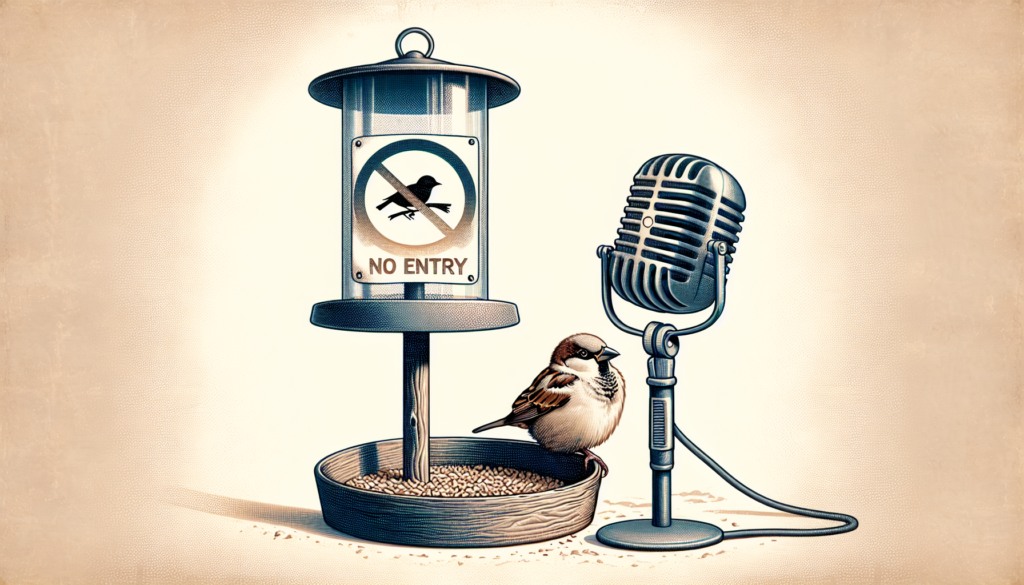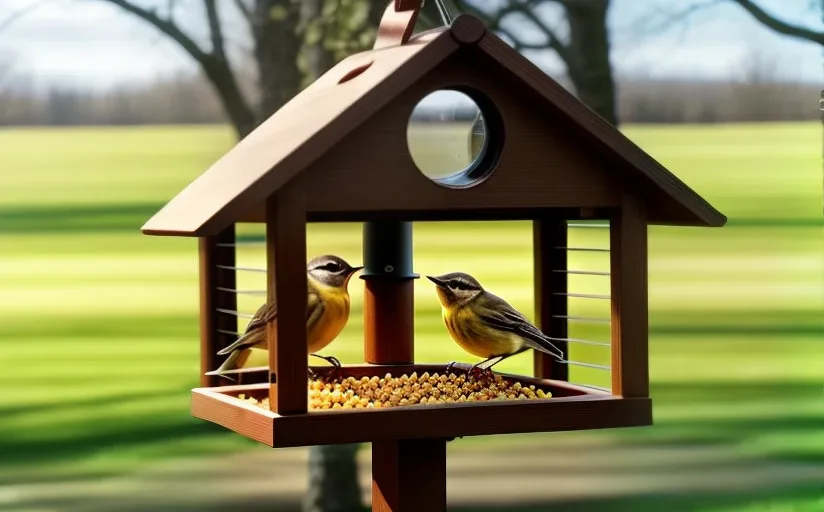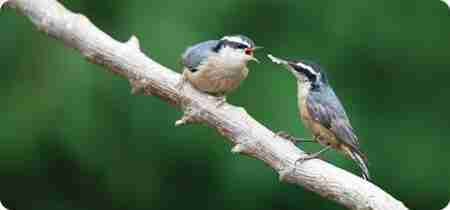Are you frustrated with sparrows taking over your backyard and causing damage to your property? If so, you’re not alone. Many homeowners struggle with finding effective methods to remove sparrows without causing harm to other birds. In this article, we will explore some practical and humane approaches to sparrow removal that will help you regain control of your outdoor space while keeping other feathered friends safe and sound. So say goodbye to those pesky sparrows and hello to a harmonious coexistence with nature!
Understanding the Sparrow Problem
Sparrows are a common sight in many urban and suburban areas, known for their cheerful chirping and social behavior. However, their population growth and adaptability have led to various issues that require attention. To effectively address the sparrow problem, it is crucial to understand their species, negative impact, and reasons for infestations.
Identifying the Sparrow Species
There are several species of sparrows, but the House Sparrow (Passer domesticus) and the Eurasian Tree Sparrow (Passer montanus) are the most widespread and problematic. House Sparrows are small, brown birds with black bibs on their chests, while the Eurasian Tree Sparrows have a similar appearance but lack the black bib.
Understanding the Negative Impact of Sparrows
While sparrows possess certain positive traits, such as seed dispersal and insect control, they can also cause significant issues. They often compete with native bird species for nesting sites and food, leading to a decline in biodiversity. Sparrows can also transmit diseases to other birds and humans, making their presence a concern for both wildlife and public health.
Reasons for Sparrow Infestations
Sparrow infestations typically occur due to a combination of factors. They are opportunistic nesters and readily adapt to human-made structures, such as buildings and houses. Sparrows are attracted to easily accessible food sources and nesting materials, and their numbers can multiply rapidly if not addressed. Understanding the reasons behind sparrow infestations is crucial for implementing effective prevention and removal techniques.
Prevention Techniques to Deter Sparrows
Preventing sparrow infestations is preferable to dealing with them after they have established a presence. By employing various techniques, you can discourage sparrows from choosing your property as their nesting and feeding grounds.
Sealing Entry Points
One of the most effective ways to prevent sparrow infestations is by sealing all possible entry points. Inspect your building or house for any gaps or holes where sparrows can enter and seal them using caulk or wire mesh. Ensure that vents, chimneys, and other openings are properly covered with mesh screens to prevent access.
Removing Food Sources
Sparrows are attracted to easily accessible food, such as spilled grains, bird feeders, and unprotected crops. Regularly clean up any spilled seeds or grains to minimize food sources for sparrows. When using bird feeders, choose ones that are designed to discourage larger birds like sparrows, or place them in areas where sparrows have limited access.
Utilizing Bird Deterrents
Various types of deterrents can discourage sparrows from nesting or roosting on your property. Visual deterrents, such as reflective objects, scarecrows, or predator decoys, can create an environment that sparrows find inhospitable. Sound devices, such as ultrasonic repellers or bird distress calls, can also be effective in deterring sparrows.
Humane Sparrow Removal Methods
If sparrows have already established a presence on your property, it is important to remove them in a humane manner that minimizes harm to both the birds and other wildlife.
Trapping and Relocating Sparrows
Trapping and relocating sparrows can be an effective way to remove them from your property. Use bird traps specifically designed for sparrows, baited with their preferred food, such as cracked corn or millet. Once trapped, the sparrows can be safely released in an appropriate location, away from residential areas.
Using Sound Devices to Repel Sparrows
Sound devices that emit distress calls or predator sounds can effectively repel sparrows, as they perceive these sounds as a potential threat. Place these devices strategically around your property, particularly in areas where sparrows congregate or nest. Ensure that the volume is set to an appropriate level that is effective but not overly disturbing to other wildlife or residents.

Employing Visual Scare Tactics
Visual scare tactics, such as hanging reflective objects or using scarecrows, can startle sparrows and discourage them from roosting or nesting. Install these deterrents in areas where sparrows are frequently seen or in locations where they are likely to target for nesting. Regularly move and change the position of the deterrents to prevent sparrows from becoming accustomed to them.
Traditional Sparrow Control Methods to Use with Caution
While some traditional sparrow control methods have been used in the past, they should be approached with caution due to potential harm to other bird species and the environment.
Installing Bird Netting
Bird netting is a commonly used method to prevent sparrows from accessing certain areas. However, it is essential to ensure that the netting is properly installed to avoid unintentionally trapping non-target birds. Regular monitoring of the netting and prompt release of any unintended catches is crucial for minimizing harm.
Implementing Bird Spikes
Bird spikes are typically installed on ledges, roofs, or other surfaces to prevent birds, including sparrows, from perching or nesting. However, they can also deter other bird species that are not causing problems. Careful consideration should be given to ensuring that the implementation of bird spikes targets the specific areas frequented by sparrows while allowing unobstructed access for other birds.
Using Chemical Repellents
Chemical repellents, such as avicides, have been used to control sparrows. However, these substances can have unintended consequences and pose risks to other bird species, pets, and the environment. Therefore, the use of chemical repellents should only be considered as a last resort and under the guidance of professionals to minimize harm.

Creating Bird-Friendly Spaces
Creating bird-friendly spaces not only benefits native bird species but can also help to discourage sparrows from establishing a presence.
Enhancing Nesting Opportunities for Native Birds
By providing nesting boxes or structures specifically designed for native bird species, you can encourage them to occupy these spaces instead of competing with sparrows for nesting sites. Research the nesting requirements of local bird species and install suitable nesting boxes in your yard or garden to attract and support native birds.
Providing Bird Feeders and Baths
Offering bird feeders stocked with birdseed or nectar can divert sparrows’ attention from other food sources on your property. Choose feeders that are designed to attract smaller bird species while discouraging larger, more aggressive birds like sparrows. Additionally, providing bird baths or water sources will not only attract native birds but also create a pleasant environment that may deter sparrows.
Attracting Natural Predators
Encouraging the presence of natural predators, such as hawks, owls, or snakes, can help control sparrow populations. Create habitats that attract these predators, such as offering perching sites like tall trees or installing nesting boxes designed for raptors and owls. However, ensure that their presence does not pose a threat to other small birds or pets.



Monitoring and Regular Maintenance
Regular monitoring and maintenance of your property are essential for effective sparrow control and preventing reinfestation.
Periodic Inspection
Regularly inspect your property for any signs of sparrow activity, such as nests, droppings, or congregating sparrows. Prompt identification and addressing of these signs will help prevent the establishment of larger sparrow populations and potential damage.
Promptly Addressing Sparrow Nests
If you discover sparrow nests on your property, it is important to address them promptly. Remove the nests and ensure that no eggs or young sparrows remain in the area. Taking swift action will discourage sparrows from returning to the same location for nesting in the future.
Regular Cleaning and Maintenance
Maintain a clean environment by regularly cleaning up bird feeders, bird baths, and surrounding areas. Properly dispose of any spilled seeds or grains that may attract sparrows. Regular maintenance of deterrents, such as visual devices or sound devices, will help ensure their continued effectiveness in deterring sparrows.
Legal Considerations and Bird Conservation
When dealing with sparrows, it is essential to familiarize yourself with local bird protection laws and regulations to ensure that your actions are compliant and do not pose a risk to other bird species.
Familiarizing with Local Bird Protection Laws
Different regions and countries may have specific laws and regulations that protect certain bird species. Educate yourself about the laws in your area to ensure that your sparrow control methods are legal and do not cause harm to protected birds.
Seeking Professional Advice
When in doubt or when dealing with larger sparrow populations, it is advisable to seek professional advice from experts in bird control and conservation. They can provide guidance on effective and humane sparrow removal methods specific to your situation and ensure that you remain in compliance with local regulations.
Supporting Bird Conservation Organizations
Take an active role in supporting bird conservation organizations that focus on promoting the well-being and protection of all bird species. By supporting these organizations financially or through volunteering, you contribute to the broader goal of maintaining ecological balance and preserving bird populations.
Educating the Community
Raising awareness about sparrow-related issues and promoting responsible bird management practices is crucial for effective long-term sparrow control.
Raising Awareness about Sparrow-related Issues
Organize community events, workshops, or seminars to educate individuals about the negative impact of sparrow infestations and the importance of managing them responsibly. Emphasize the need for sustainable and humane sparrow control methods that take into account the welfare of all bird species.
Sharing Knowledge on Non-Harming Solutions
Educate your community about non-harming solutions and prevention techniques to deter sparrows effectively. Encourage the use of bird-friendly practices, such as providing nesting opportunities for native birds and maintaining clean environments, to discourage sparrow infestations without causing harm.

Promoting Responsible Bird Management Practices
Advocate for responsible bird management practices that maintain a balance between human interests and bird conservation. Encourage the use of humane sparrow removal methods and the implementation of bird-friendly measures to create harmonious coexistence between people and birds.
Case Studies: Successful Sparrow Control Projects
Learning from successful sparrow control projects can provide valuable insights and inspiration for addressing sparrow infestations effectively.
Implementing Combined Prevention Methods
Some successful projects have demonstrated the effectiveness of implementing multiple prevention techniques simultaneously. By combining sealing entry points, removing food sources, and utilizing bird deterrents, these projects have significantly reduced sparrow populations and minimized negative impact.
Strategies Employed by Bird Sanctuaries
Bird sanctuaries often face unique challenges in managing sparrow populations while preserving the well-being of other bird species. Successful strategies employed by bird sanctuaries include creating bird-friendly spaces, employing humane removal methods, and promoting sustainable bird management practices as examples for other communities.
Lessons Learned from Urban Areas
Urban areas present specific challenges for sparrow control due to the high population density and limited natural nesting options for native bird species. Successful projects in urban areas have focused on creating bird-friendly spaces in parks, rooftops, and urban gardens, as well as actively involving the community in responsible bird management.
Conclusion
Effectively addressing sparrow infestations without harming other bird species is possible through a combination of prevention techniques, humane removal methods, and bird-friendly practices. By understanding the sparrows’ impact, implementing the right strategies, and promoting responsible bird management, we can find a balance between human interests and bird conservation. Together, we can create environments that benefit native birds while controlling sparrow populations responsibly.


